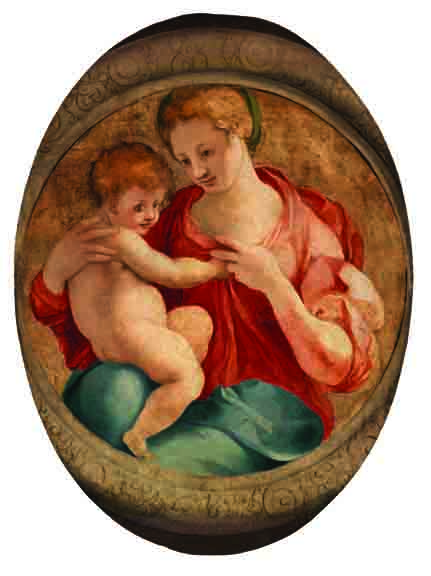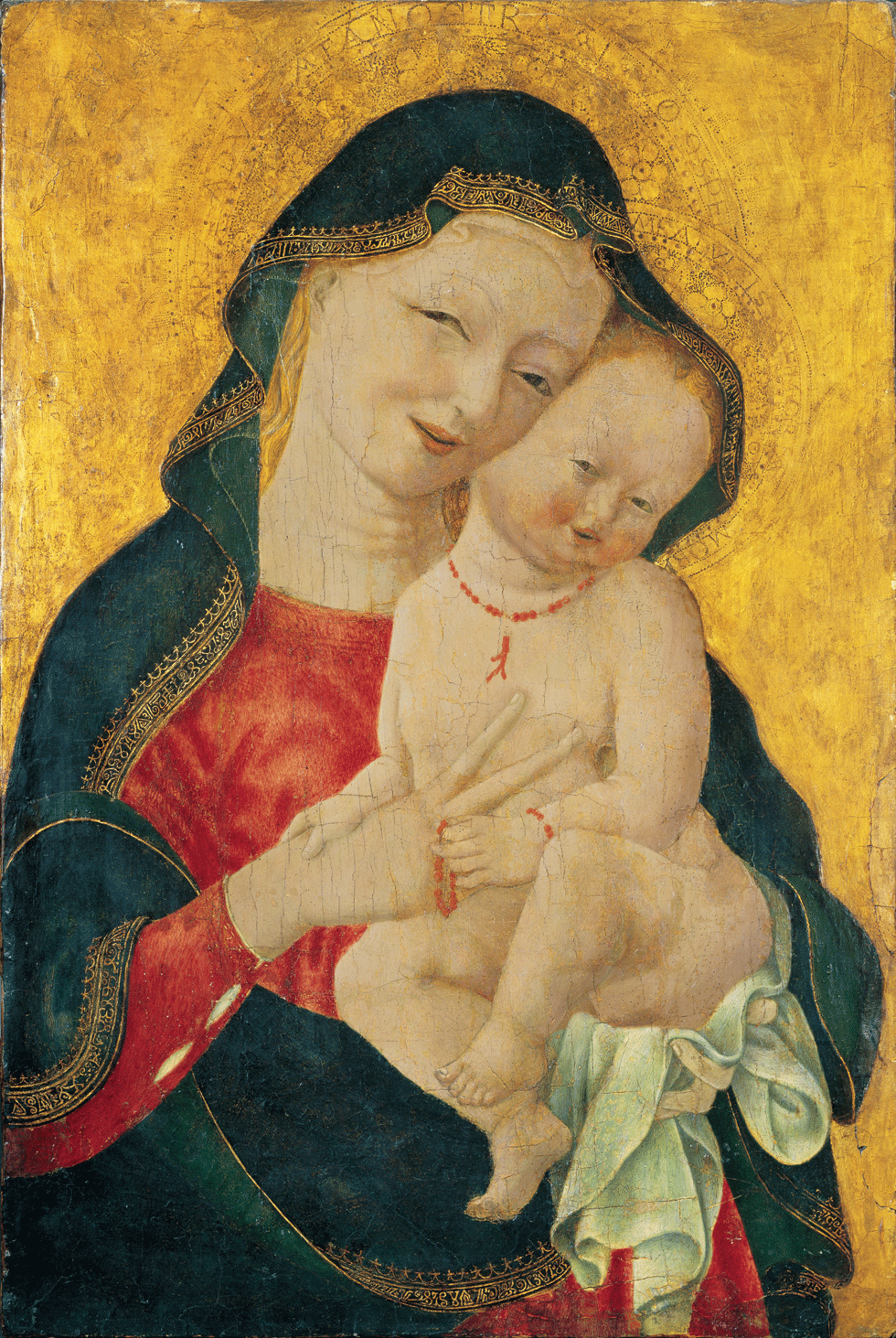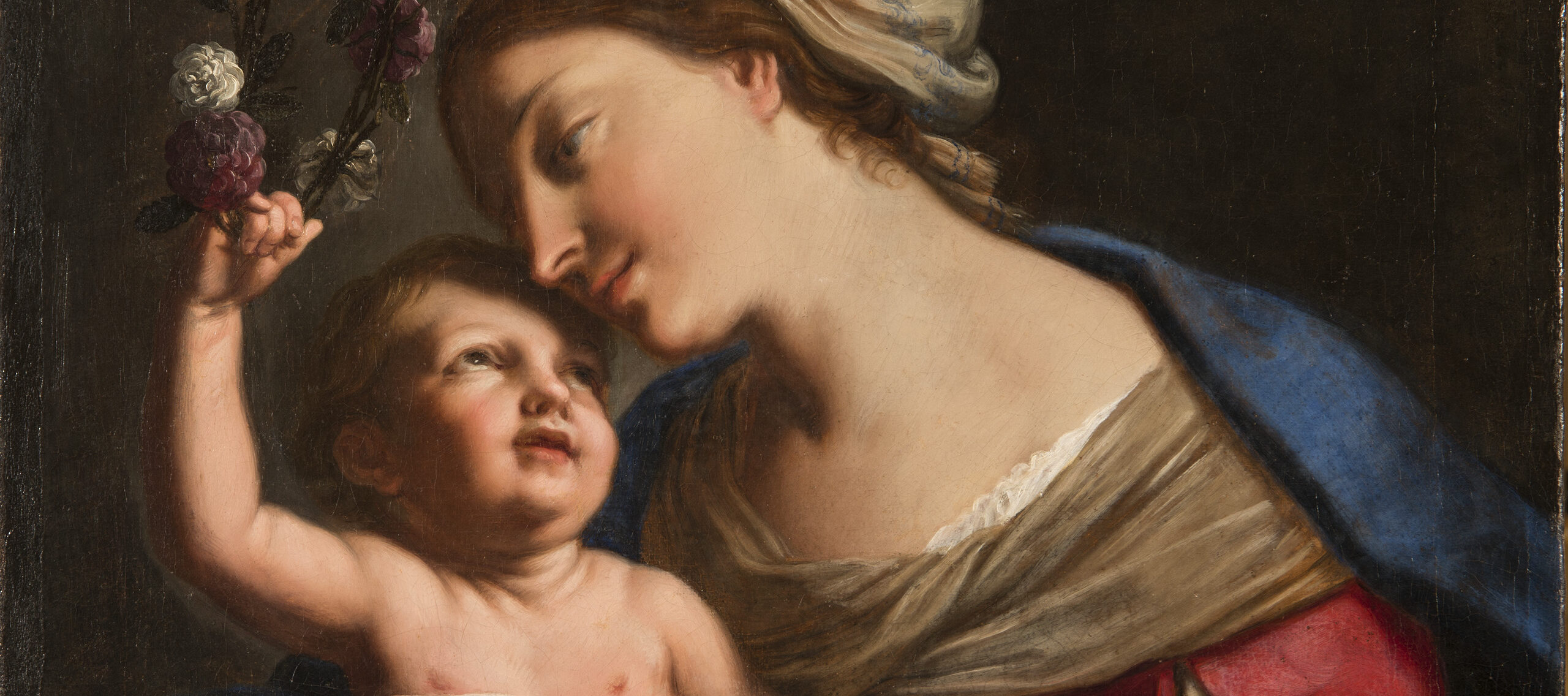Paintings of Mary cradling her newborn son Jesus line the walls of Picturing Mary: Woman, Mother, Idea. This iconic “Madonna and Child” pose, the most prevalent visual representation of the two, was popularized during the 5th century following the Catholic Church’s sanctioning of the cult of Mary as Mother of God. The figures’ position, as well as the iconic shades of blue and red that Mary often wears, captures an expansive definition of motherhood. The Virgin Mary is not only mother to Jesus, but to all humanity.

But what does it mean to be a mother? Pontormo’s Madonna and Child (1527) reveals that motherhood involves physical and emotional closeness to one’s child. The large figures of Mary and Jesus dominate the picture plane. As Mary supports her son on her knee, the two figures hold hands and Jesus grabs his mother’s bodice. Their heads are tilted toward each other with tender, loving expressions. These elements both physically connect the Virgin and Jesus and imply the deep-rooted bond of mother and child. Pontormo’s use of this pose, with Mary’s hand supporting her son’s back, affirms her supportive and nurturing nature as a new mother.
Here, Mary wears her signature blue cloak with a red shirt underneath. Deeply rooted in Catholic symbolism, the blue of her cloak has been interpreted to represent the Virgin’s purity, symbolize the skies, and label her as an empress, for blue was associated with Byzantine royalty. Her shirt’s red color signifies love, passion, and devotion—all traits connected with motherhood and exemplified by Mary’s presence at the Crucifixion.

Like Pontormo’s painting, Madonna and Child (ca. 1450) by the Master of the Winking Eyes underscores Mary’s affectionate temperament and role as a mother. In this jovial scene, Mary tickles her son as her blue veil covers both of their heads. Their joyful expressions and close physical proximity capture the scene’s tenderness while the golden background further encapsulates the lighthearted, playful interaction. By humanistically depicting the Virgin laughing with her baby, the Master of the Winking Eyes portrays Mary as a relatable mother, showcasing her humanity. Her veil, draped over both heads, symbolizes the human nature that Christ inherited from his mother as well as their loving bond.

Beyond her role as Mother of God, Mary was often depicted as mother to all mankind. Mother of Mercy (Madonna della Misericordia) (1494) by an unknown artist illustrates this expansive definition of mother. The standing Virgin envelops the faithful beneath her cloak. This Mater Misericordiae or “Mother of Mercy” image type dates back to the 13th century, and it embodies the popular medieval idea of Mary as mother to all believers. The image of Christ over Mary’s womb hints at her elevated nature, and her superhuman size accentuates her importance.
Like in the other two paintings, in her role as a mother Mary is a maternal protector. In Picturing Mary, images capture the multifaceted nature of motherhood along with the multifaceted nature of the Mother of God herself.
Picturing Mary was on view from December 5, 2014, to April 12, 2015 at the National Museum of Women in the Arts.
